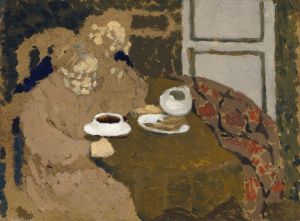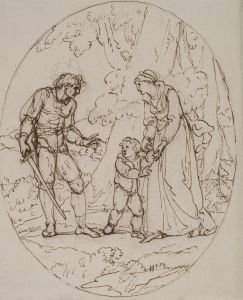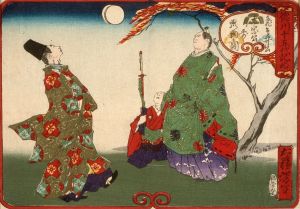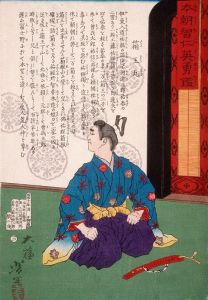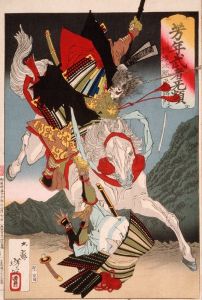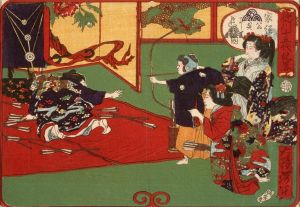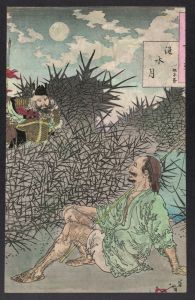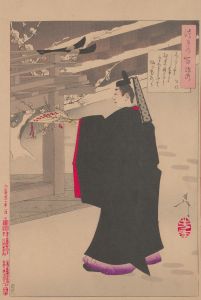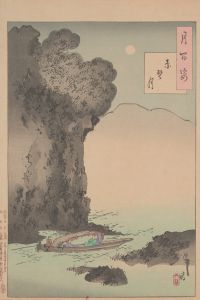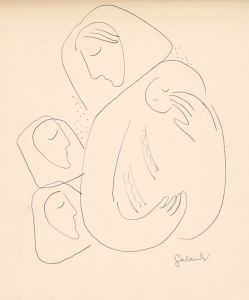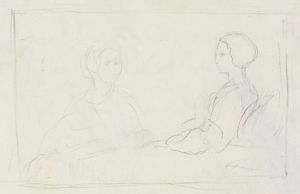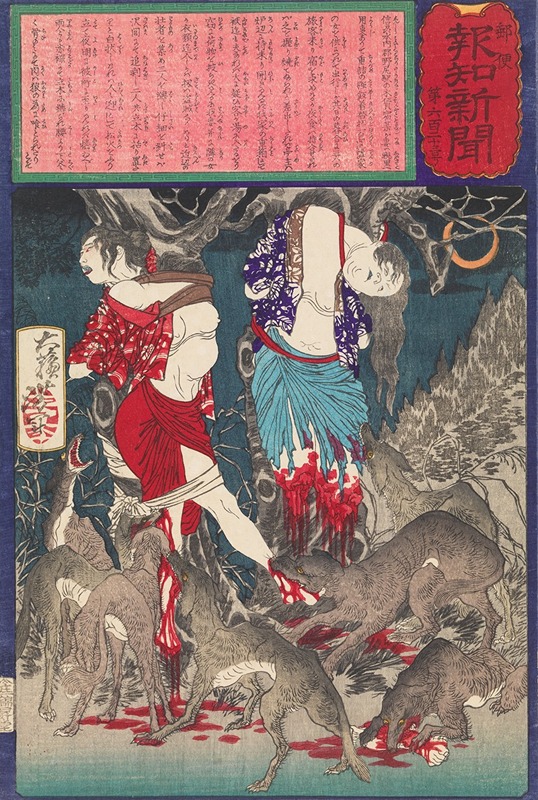
Two Women of Nojiri Who were Robbed, Tied to Trees, and Eaten by Wolves
A hand-painted replica of Tsukioka Yoshitoshi’s masterpiece Two Women of Nojiri Who were Robbed, Tied to Trees, and Eaten by Wolves, meticulously crafted by professional artists to capture the true essence of the original. Each piece is created with museum-quality canvas and rare mineral pigments, carefully painted by experienced artists with delicate brushstrokes and rich, layered colors to perfectly recreate the texture of the original artwork. Unlike machine-printed reproductions, this hand-painted version brings the painting to life, infused with the artist’s emotions and skill in every stroke. Whether for personal collection or home decoration, it instantly elevates the artistic atmosphere of any space.
"Two Women of Nojiri Who were Robbed, Tied to Trees, and Eaten by Wolves" is a woodblock print created by the renowned Japanese artist Tsukioka Yoshitoshi. Yoshitoshi, born in 1839 and passing in 1892, was a prominent figure in the ukiyo-e genre, which flourished during the Edo and Meiji periods in Japan. His works are known for their dramatic intensity, vivid imagery, and often, their exploration of macabre themes.
This particular print is part of Yoshitoshi's series "New Forms of Thirty-Six Ghosts" (Shinkei Sanjūrokkaisen), which he produced between 1889 and 1892. The series is celebrated for its imaginative and often eerie depictions of supernatural and ghostly tales from Japanese folklore and history. Yoshitoshi's ability to blend traditional ukiyo-e techniques with innovative compositions and a keen sense of storytelling is evident in this series.
The print "Two Women of Nojiri Who were Robbed, Tied to Trees, and Eaten by Wolves" illustrates a gruesome and tragic event. The scene shows two women who have been bound to trees, their expressions conveying a sense of terror and helplessness. The title suggests that these women were victims of a robbery, subsequently left to a horrific fate where they were devoured by wolves. This narrative is reflective of the darker themes Yoshitoshi often explored in his work, highlighting the vulnerability and suffering of individuals in the face of nature's and humanity's cruelties.
Yoshitoshi's technique in this print, as in many of his works, demonstrates his mastery of the woodblock printing process. The use of color, line, and composition creates a powerful visual impact, drawing the viewer into the harrowing story being depicted. The attention to detail in the women's clothing and the surrounding environment adds to the authenticity and emotional weight of the scene.
The historical context of Yoshitoshi's work is significant. During the late 19th century, Japan was undergoing rapid modernization and Westernization following the Meiji Restoration of 1868. This period of transition saw a decline in the popularity of traditional ukiyo-e prints, as new forms of media and art began to emerge. Despite these changes, Yoshitoshi remained dedicated to the craft, and his works from this period are often seen as a bridge between the classical ukiyo-e style and the modern era.
Yoshitoshi's "New Forms of Thirty-Six Ghosts" series, including "Two Women of Nojiri Who were Robbed, Tied to Trees, and Eaten by Wolves," is considered one of his masterpieces. It reflects his deep engagement with Japanese folklore and his ability to convey complex emotions and narratives through the medium of woodblock printing. The series has been influential in both Japanese and Western art circles, appreciated for its artistic merit and its haunting, evocative imagery.
In summary, "Two Women of Nojiri Who were Robbed, Tied to Trees, and Eaten by Wolves" is a striking example of Tsukioka Yoshitoshi's work, showcasing his skill in depicting dramatic and often unsettling scenes. It stands as a testament to his enduring legacy in the world of Japanese art and his contribution to the ukiyo-e tradition during a time of significant cultural change.





